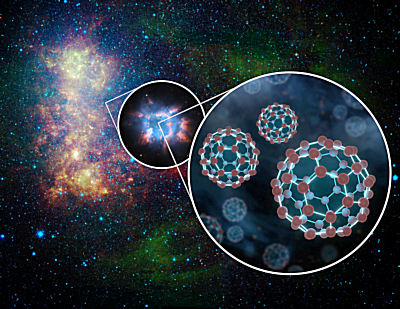 by Dauna Coulter and Dr. Tony Phillips
by Dauna Coulter and Dr. Tony Phillips
So far this spring, more than 1,400 tornadoes have struck the U.S. Some of them have cut jaw-dropping trails of destruction across the countryside and, tragically, across inhabited communities, too. Hundreds of lives have been lost in the onslaught.
Throughout the season, the National Weather Service has routinely issued tornado alerts. In the case of the Alabama tornadoes of April 27th, forecasters warned of severe weather five full days before the twisters struck. Because they couldn’t say precisely where the twisters would strike, however, many of their warnings went unheeded.
“If people get a hurricane warning, they often evacuate the area,” notes NOAA's Steve Goodman. “But we react differently to tornado warnings.”
Perhaps it’s because tornadoes are smaller than hurricanes, and the odds of a direct hit seem so remote. Recent pictures from Tuscaloosa, Alabama, and Joplin, Missouri, however, show the perils of playing those odds. Goodman believes that more precise warnings could save lives.
To fine-tune tornado warnings, NOAA will soon launch the first in a series of next-generation weather satellites — GOES-R (Geostationary Operational Environmental Satellites-R series). The spacecraft is brimming with advanced sensors for measuring key ingredients of severe weather including winds, cloud growth, and lightning.
“GOES-R will be the first geostationary spacecraft to carry a lightning sensor,” says Goodman, the GOES-R Program Senior Scientist. “Studies show that sudden changes in the total lightning activity correlate with storm intensity &madash; and with tornadoes.”
The lightning mapper will detect and map not only cloud-to-ground lightning, but also bolts within and between clouds. The kind of cloud-to-ground lightning we see from our front yards accounts for only 15-20 percent of total lightning. To get a clear idea of a storm's intensity, meteorologists need to know about all the lightning — a view GOES-R can provide.
All by itself, the lightning mapper will provide 7 minutes more lead time in tornado warnings, according to Goodman. GOES-R’s state-of-the-art instruments will also improve long-range forecasts.
“The satellite's Advanced Baseline Imager (ABI), for instance, will provide a much clearer picture of clouds,” says NOAA research meteorologist Tim Schmit. Compared to lesser instruments already in orbit, ABI can better detect super-cold “overshooting tops,” evidence of enormous energy and upward velocity that correlate with subsequent severe weather.
“Accurate advanced notice of high-risk tornadic conditions can cue officials to close schools and businesses even before tornadoes are actually detected,” says Schmit.
Forecasters doubt tornadoes can ever be predicted with 100% accuracy. The twisters are just too capricious. GOES-R, however, is a step in the right direction.
Find out more about GOES-R’s unprecedented capabilities at
http://www.goes-r.gov. Young people can learn more about tornadoes and all kinds of other weather at
http://scijinks.gov.
This article was provided by the Jet Propulsion Laboratory, California Institute of Technology, under a contract with the National Aeronautics and Space Administration.

















